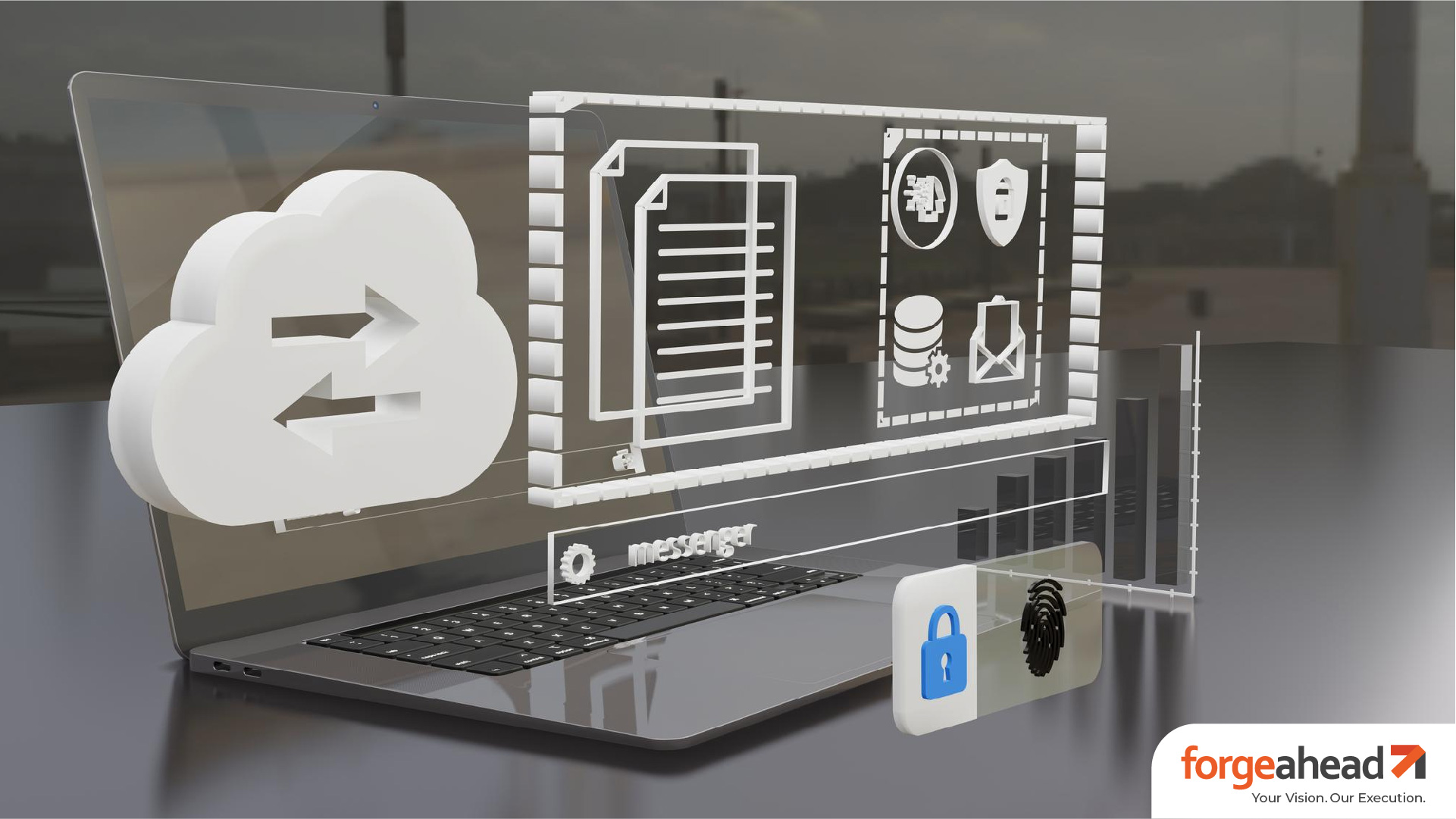Have you ever wondered how to supercharge your AWS Lambda functions for better performance and cost-efficiency?
AWS Lambda stands as a pivotal service that lets developers run code without managing servers, facilitating seamless scalability and management of infrastructure.
Yet, optimizing these functions remains a key challenge for many IT leaders.
Enter AWS Lambda PowerTools, a suite of utilities designed to enhance Lambda functions across various dimensions including performance, monitoring, and security.
These tools simplify the complexities of using AWS Lambda and boost its integration and efficiency in diverse cloud environments.
Let’s explore the best practices and use cases that illustrate the transformative impact of this toolkit on your cloud operations.
Maximizing Efficiency in Lambda Functions
Optimizing the performance of AWS Lambda functions is crucial for running efficient, cost-effective serverless applications.
Here’s how you can enhance their performance and responsiveness:
1. Code Optimization: Keep it Lean and Mean
- Streamline Your Code: Begin with refining your code. The leaner your code, the quicker Lambda can execute it. Remove unnecessary libraries, minimize dependencies, and use asynchronous programming models to handle I/O operations more efficiently
- Optimize Your Execution Path: Focus on reducing the execution path by simplifying loops and conditional statements, which directly decreases the execution time of your Lambda functions
2. Managing Cold Starts: Minimize Initialization Overheads
- Keep Your Function Warm: Cold starts occur when Lambda functions are invoked after a period of inactivity, leading to latency. Implementing a keep-warm strategy, where you trigger your Lambda function at regular intervals, can help minimize these cold starts
- Deployment Choices: Deploy your functions in a VPC if required, but be aware it might increase the cold start time. Optimize your VPC settings, including how networking resources are managed
3. Leveraging Caching: Speed Up with Persistent State
- Externalize State with Caching Services: Use Amazon ElastiCache or DynamoDB Accelerator (DAX) to cache frequent database queries or computation results. Caching helps avoid re-execution of heavy tasks, thus speeding up Lambda execution
- Smart Caching Inside Lambda: If your function handles similar requests, implement in-memory caching by storing the data in global/static variables. This method keeps data across invocations and serves repeated requests faster
Have you assessed which part of your Lambda function could be optimized for better performance?
Cost Optimization with AWS Lambda PowerTools
Optimizing AWS Lambda costs is essential for maintaining efficiency and affordability in serverless computing. Here are several practical strategies to reduce Lambda costs effectively:
1. Right-Sizing Lambda Functions:
Adjust the memory allocated to each function. Right-sizing helps you find the balance between performance and cost, ensuring you only pay for the resources you need.
2. Efficient Code Execution:
Streamline your code to use fewer resources and run faster. This includes minimizing the deployment package size, optimizing code logic, and reducing the complexity of dependencies.
3. Reuse of Execution Context:
Initialize heavy objects and connections outside of the function handler to take advantage of container reuse across multiple invocations. This reduces initialization latency and lowers the number of cold starts.
4. Control Invocation Frequency:
Reduce unnecessary invocations by implementing smarter event filtering and batching. For example, adjust the batch size in event source mappings for services like SQS or Kinesis to process more items per invocation.
5. Use Provisioned Concurrency for Predictable Workloads:
This helps avoid cold starts and can be more cost-effective for consistent traffic patterns by reserving capacity.
6. Leverage AWS Savings Plans:
Commit to a consistent amount of usage (measured in $/hour) for a 1 or 3-year term to receive a lower price compared to on-demand rates.
7. Optimize Data Transfer Costs:
Be mindful of the data transfer costs associated with Lambda, particularly when Lambda functions interact with other AWS services or the internet. Minimizing the data transferred can significantly reduce costs.
8. Monitor and Adjust in Real-Time:
Regularly review and adjust configurations using tools like AWS Lambda Power Tuning to automate the analysis of performance versus cost trade-offs.
Monitoring and Debugging
Effectively monitoring and debugging AWS Lambda functions is crucial to ensure they operate optimally and to quickly address any issues that arise.
This table summarizes key tools and techniques, outlining their advantages and functionality:
Advantages of AWS Powertools
| Tool/ Technique | Advantages | How It Works |
| AWS CloudWatch | Comprehensive monitoring and operational data collection. | Collects and tracks metrics, collects and monitors log files, sets alarms. |
| AWS X-Ray | Detailed tracing of requests as they go through your Lambda functions. | Provides insights into the behavior of your application and its underlying services. |
| AWS Lambda Insights | Enhanced monitoring specifically designed for Lambda. | Automatically collects performance metrics and logs from your Lambda functions. |
| Step Functions | Orchestrates complex workflows where debugging is simplified. | Visualizes workflows and identifies where processes may fail or stall. |
Best Practices in Debugging
- Use structured logging to generate informative, easy-to-understand logs that detail the function’s execution path and data processing
- Set breakpoints in your code or through tools like AWS SAM CLI and AWS Toolkit for your IDE to halt execution and inspect the state at critical points
- Use correlation IDs in your logs to track and trace function execution across distributed services seamlessly
- Configure alerts using AWS CloudWatch to notify you of unusual activities or errors that could indicate underlying issues with your Lambda functions
By integrating these tools and adhering to these debugging best practices, developers can not only maintain a healthy Lambda environment but also resolve issues with greater speed and accuracy.
Scaling and Sustaining Lambda Functions
Designing AWS Lambda functions to efficiently handle varying workloads is pivotal for organizations aiming for high scalability and resilience.
Here’s how you can ensure that your Lambda functions can adapt to workload fluctuations while maintaining robust performance:
1. Implement Event-Driven Architecture
Design your Lambda functions to be event-driven, which allows them to respond immediately to workload changes. This architecture supports scaling by triggering Lambda functions based on specific events, thereby distributing the load effectively.
2. Manage State Efficiently
For stateful operations, ensure that state management is externalized using AWS services like DynamoDB. This helps maintain state consistency across function invocations and scales independently from your compute resources.
3. Provisioned Concurrency
Utilize AWS Lambda’s provisioned concurrency for critical applications that require consistent response times, even during spikes in demand. This feature prepares your function ahead of time, keeping it initialized and ready to respond instantly to events.
4. Error Handling and Retry Mechanisms
Implement robust error handling and retry mechanisms within your Lambda functions. This ensures that failures do not cascade and allows the system to recover gracefully from individual function anomalies.
5. Monitor Performance Metrics
Regularly monitor key performance metrics using AWS CloudWatch to anticipate scaling needs and adjust resources proactively. Set up alerts to notify you of any performance degradation or operational issues.
6. Integration with Legacy Systems
When integrating AWS Lambda with legacy systems, it’s crucial to ensure that your serverless architecture can interface seamlessly with these older systems.
AWS Lambda Functions with PowerTools
Here’s how you can safeguard your Lambda environments and leverage AWS Lambda PowerTools to enhance security and compliance:
1. Manage Access Control Rigorously
Implement strict access controls using AWS Identity and Access Management (IAM) to ensure that only authorized entities have access to your Lambda functions. Define minimum necessary permissions for each function, reducing the risk of unauthorized access.
2. Encrypt Sensitive Data
Always encrypt sensitive data, both in transit and at rest. Utilize AWS KMS (Key Management Service) for encryption, which integrates seamlessly with Lambda to manage keys and perform encryption operations without exposing sensitive data in your function code.
3. Regular Security Assessments
Conduct regular security assessments and audits to identify and mitigate vulnerabilities. Use tools like AWS Config and AWS Security Hub for continuous monitoring and compliance checks, ensuring your configurations adhere to security best practices.
4. Leverage AWS Lambda PowerTools
This toolkit provides utilities that simplify logging, metrics collection, and tracing for Lambda functions. These tools help maintain transparency in operations and support compliance with data protection standards by providing better visibility into function executions.
5. Compliance with Regulations
Stay compliant with international data protection regulations such as GDPR, HIPAA, or PCI-DSS by leveraging AWS’s compliance and governance tools. Ensure that your Lambda functions handle data in ways that meet these regulatory requirements, and keep your documentation and data handling policies up to date.
6. Use Environment Variables for Sensitive Information
Store sensitive configuration settings such as database passwords or API keys in environment variables instead of hard coding them into your function code. AWS Lambda encrypts these variables at rest and supports encryption in transit to secure sensitive information effectively.
Implementing these measures will help protect your applications from threats and reduce the risk of data breaches.
Unleash the Power of Lambda
In embracing AWS Lambda PowerTools, organizations unlock a realm of optimization potential that significantly enhances function effectiveness, efficiency, and security.
These tools not only streamline operations but also ensure that your serverless applications meet rigorous performance and compliance standards.
As we’ve explored, the strategic application of these enhancements can transform how your cloud infrastructure operates, making it more resilient and cost-effective.
Start optimizing your Lambda functions today and see the difference.
For more guidance and expert support, reach out to Forgeahead. Together, let’s forge ahead towards a more efficient and secure cloud environment.





